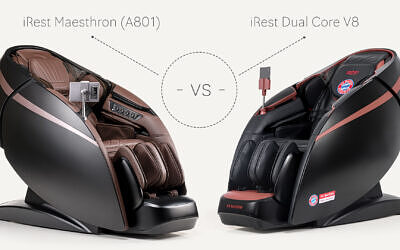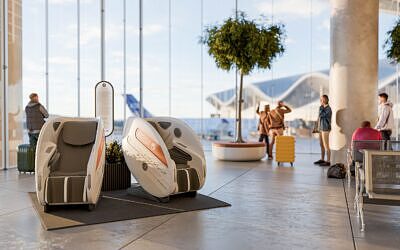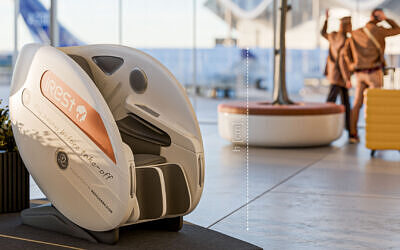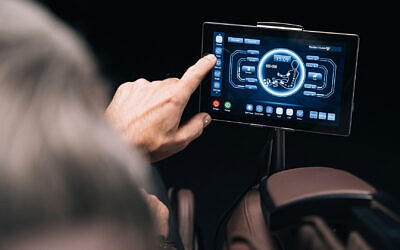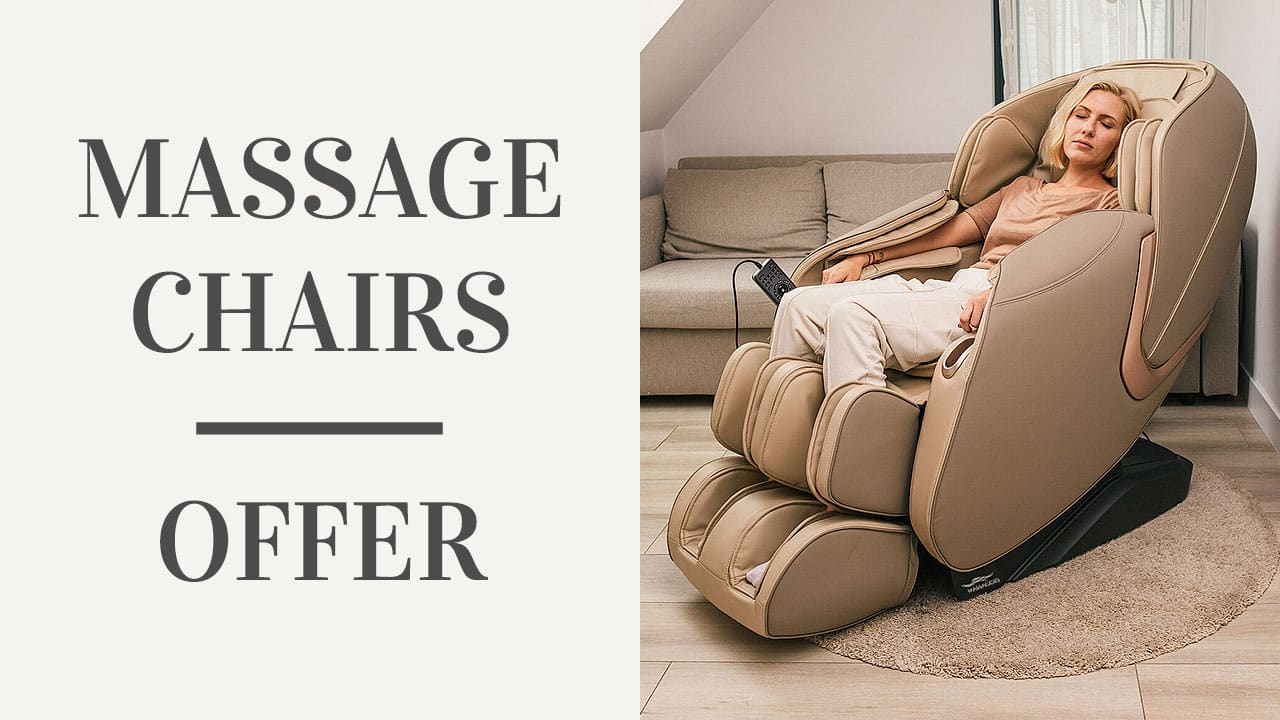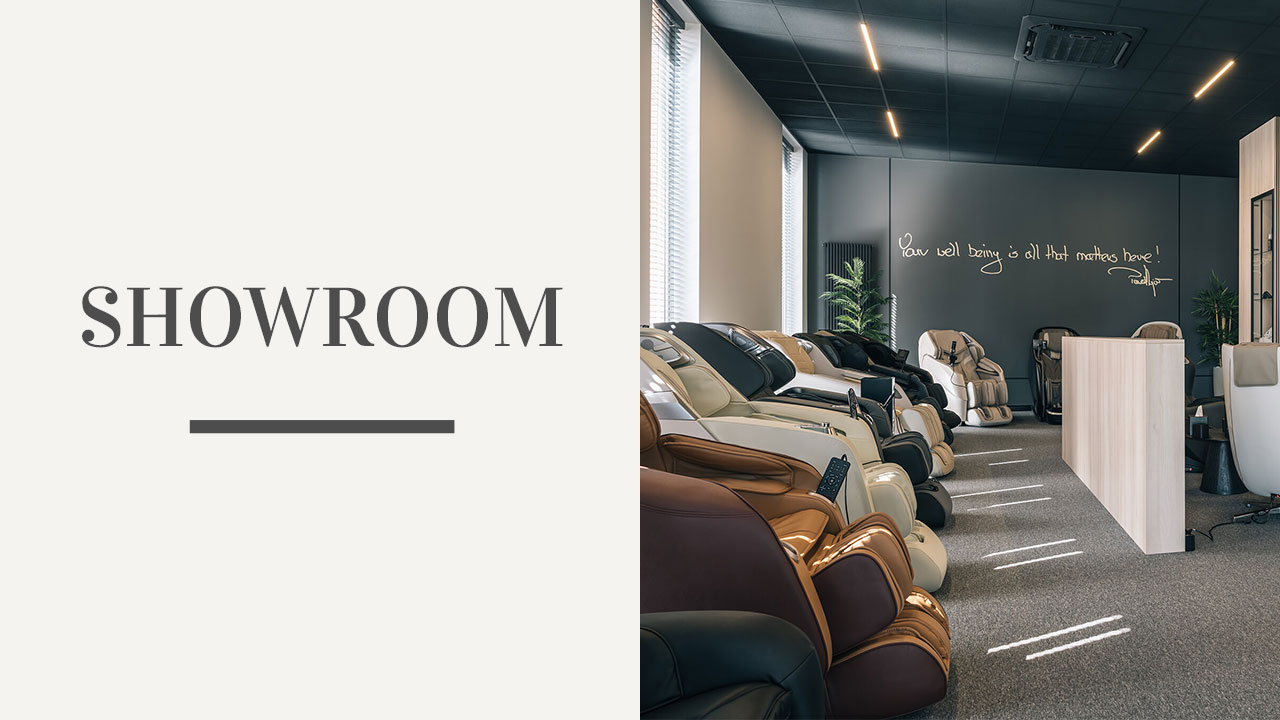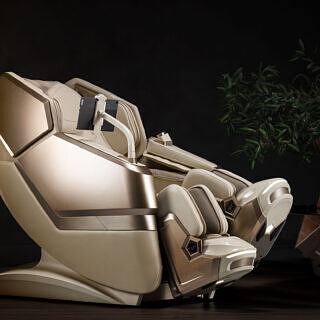Although body scanning in massage chairs is extremely common, there are still many questions surrounding this subject. What exactly is body scanning in a massage chair and what does it look like? Why does the massage chair scan the body? Which parts of the body are scanned? Is it safe? How does the massage chair handle scanning when it comes to spinal defects? In today’s article, we answer the most common questions asked by customers and dispel doubts about scanning in a massage chair.
Let’s start with a video in which Paweł briefly explains how the scanning system in massage chairs works and how it differs from model to model.
Why does the massage chair scan the body and can this function be switched off?
The scanning in the massage chair is designed to adapt the massage mechanism to the height and shape of the user’s body. This allows the massage arms to move around the designated area in such a way that the massage in the massage chair is more precise and enjoyable, going exactly where it should and at the same time being safe. Importantly, this is an automatic function and there is no way to turn it completely off. This means that the massage chair will perform a scan every time you turn it on, regardless of how often you use it. This is because a single massage chair can be used by multiple people, and even if you are the only one using it – your seating position may vary depending on the situation, for example, your body will be more or less against the back of the chair. However, if after scanning your body, you feel that the massage arms are at an inappropriate height, you have the option to adjust their position manually using the buttons on the remote control or control tablet. Some massage chair brands (including iRest and Massaggio) also allow you to skip the scanning stage and adjust the massage mechanism completely manually. We, however, do not recommend this, especially for beginners to massage chair use.
How does the massage chair scan the body?
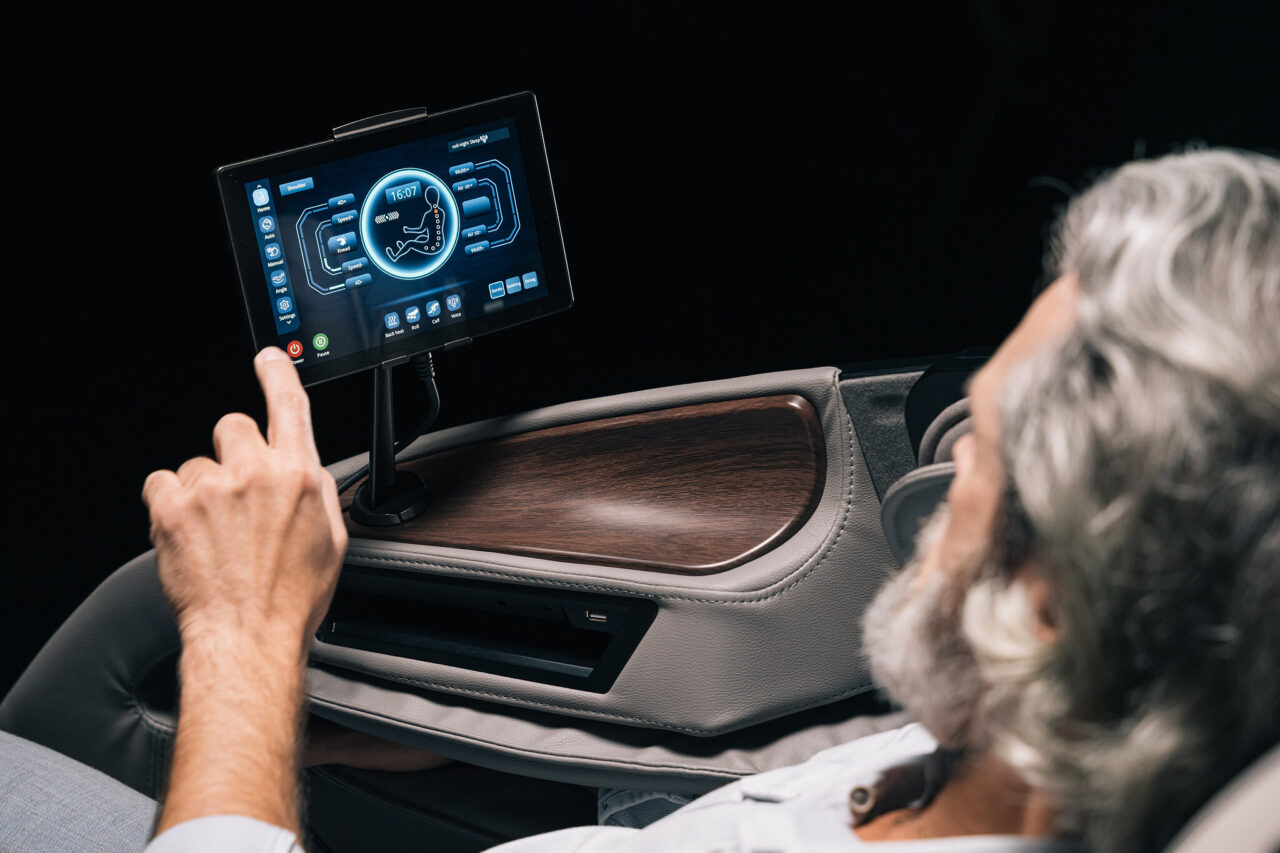
The scanning system is designed to follow the line of a spine. The user’s spine is scanned by a special sensor that is activated before the selected massage programme begins. And although the name ‘scanning’ may bring to mind an X-ray of the body, it has nothing to do with the X-ray. In this case, it is the massaging arms that move along the spine checking its length and shape. The accuracy of the scan, however, depends on the sophistication of the massage chair. In more advanced models, starting with chairs with a 3D massage system, the scanning system follows the line of the spine and remembers its shape. As a result, the massage mechanism adapts to the natural shape of the spine – it works deeper at the lumbar section and moves away at the thoracic section. In basic chairs with a 2D system, scanning is usually limited to recognising the user’s height, which in turn has a protective function. It ensures that the massage arms do not massage the head, but work only on the spinal section, stopping at neck level.
How to improve the scanning efficiency?
It is worth knowing that the effectiveness of scanning in a massage chair does not only depend on the level of sophistication of the individual models. Its accuracy can also be affected by the actions performed directly by the user. And here it should be noted that it is extremely important to sit properly in the massage chair. Any correcting, twisting or holding your head up can result in the spine not being scanned properly and, therefore, in a less accurate massage. To improve the effectiveness of the massage, you should therefore take the most comfortable position for yourself before you switch on the massage chair. Your body (including your head) must be pressed against the seat and backrest of the massage chair until the scan is complete, your arms and legs are in the designated areas, and the heels of your feet are pressed into the footrest (if the chair you are using has one). So once you have started the chair and selected your massage programme, remember not to move until the chair has scanned you. Rest assured, however, that this does not take long – usually a few tens of seconds, or even shorter on some models.
Interesting fact: The current fastest-scanning chair in our range is the Bodyriend Phantom Rovo, in which scanning can take place in 15 seconds thanks to an extremely advanced system.
Double scanning in the FUJIIRYOKI MASSAGE CHAIRS
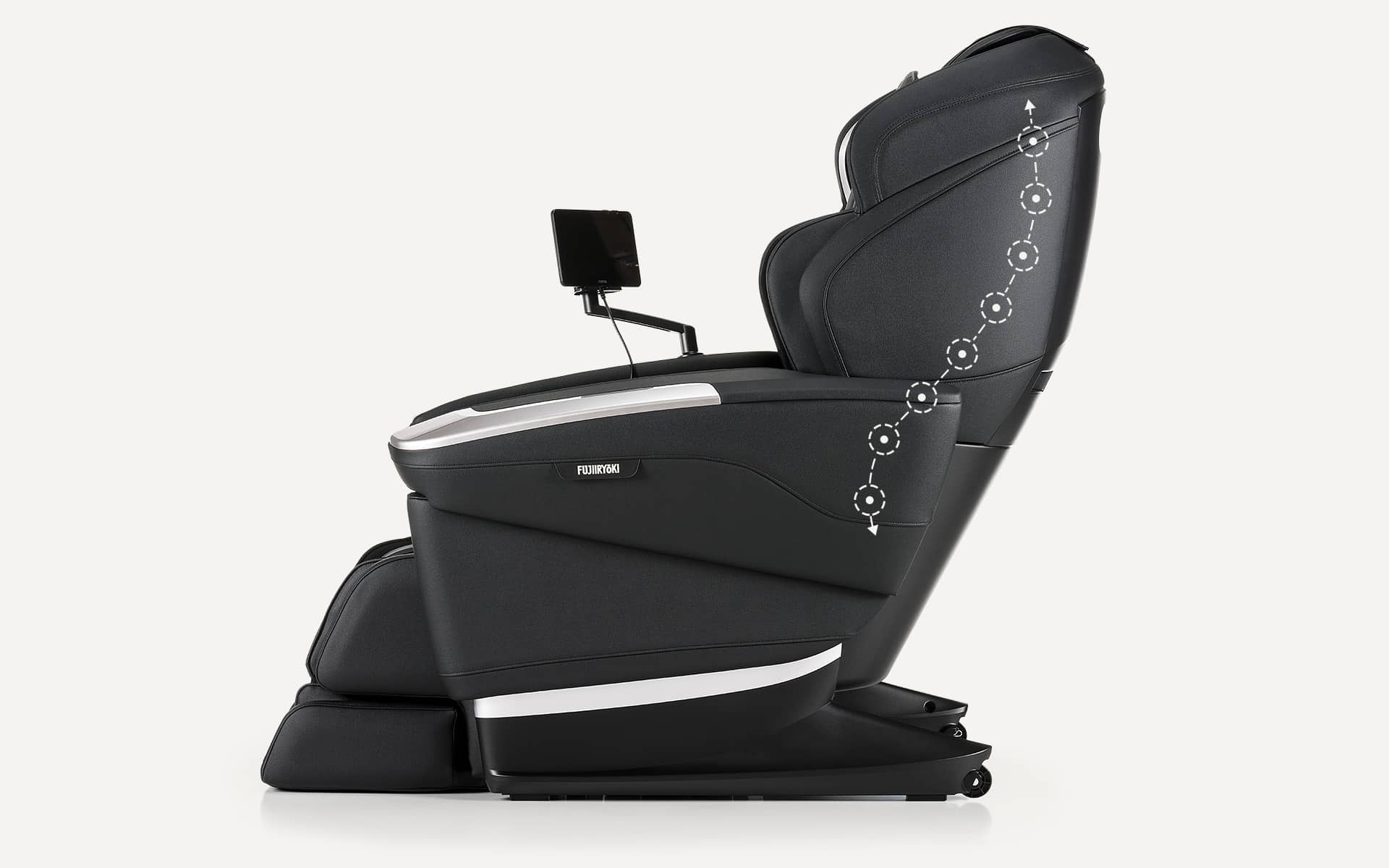
While we’re on the subject of scanning, we couldn’t leave out the most advanced scanning system available on the massage chair market – the double scanning available on the Japanese Fujiiryoki JP4000, and before that on the Fujiiryoki JP3000. The algorithm, developed in detail by Fujiiryoki’s engineers, scans the line of the spine, collects information about the current muscle tension and then records as many as 8 key points for massage. As a result, the massage chair can appropriately adjust the strength of the massage arms to the level of muscle stiffness, and the massage precisely targets both superficial and deep muscles. Importantly, the massage intensity of the Fujiiryoki chair is adjusted in real time using an artificial intelligence algorithm (5D AI+). The JP3000 therefore ‘senses’ when your muscles need stronger pressure and when this pressure needs to be reduced.
Spinal defects and scanning in the massage chair
Unfortunately, even the most advanced scanning function will not (yet) be able to see spinal defects or degenerative changes. As we mentioned in one of our articles, with all kinds of spinal disorders it is worth opting for a massage session with a specialist. This is because only a human is able to assess the actual condition of the spine and adjust the appropriate therapeutic massage to it. So it is always advisable, if in doubt, to consult a doctor or specialist before having a massage in the chair. They will answer any questions you may have.
In conclusion, scanning is an extremely useful function in massage chairs. It ensures that the massage is better adapted to your body and significantly affects its effectiveness. The accuracy of scanning, on the other hand, depends mainly on the level of sophistication of the massage chair – the more developed the model, the greater the precision of scanning. We hope that we have dispelled any doubts you may have about scanning, but if you would like to find out more about it, feel free to contact us. We will be happy to answer your questions and advise you on choosing the right massage chair.
Transcript
Paul, can a massage chair scan your body?
Massage chairs can scan your back, but primarily the shape of your spine, not the whole body.
Superior models have a scanning system, which is designed to follow the S shape of the spine. The results of the scan moves the mechanism closer to the spine in the lumbar region and at chest level it moves the opposite way. Then it will give a consistent pressure along the whole length of the spine.
So is it like an X-ray machine?
It works in a different way and it’s safer. Accuracy depends on how advanced the model is. In basic models, the scanning system is limited to recognising the height of the user. It is important that the head is not massaged and so the mechanism stops at neck level.
Can it recognise a scoliosis of the spine?
Unfortunately not, any degenerative changes will not be accurately identified, and as I have previously mentioned, this is a part of therapeutic massage and is not really appropriate for a massage chair.
During scanning, an advanced massage chair can recognise back muscle stiffness and adjust its strength accordingly. This is done by specific motors within the massage mechanism, which measure the tightness of a muscle and determine how much energy is needed to work through it.
Ok., but will it know when a particular tension is released?
You will feel it and then you can change the technique or programme. During a single massage session, high-end massage chairs use an AI algorithm which recognise the best possible adjustment of the massage intensity, in real time, based on the actual muscle tension detected by the chair.
Currently, artificial intelligence used in massage chairs scanning systems is a premium function and its use will definitely increase in next generation models.


